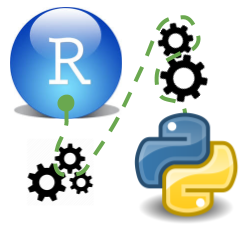There has been a lot of fuzz about jupyter notebooks lately, so lets revisit some of its features and use-cases.
We look into some techniques for scikitlearn that allow us to write more generalizable code that executes faster and helps us to avoid numpy arrays.

We look into some techniques for scikitlearn that allow us to write more generalizable code that executes faster and helps us to avoid numpy arrays.

We take scikitlearn for a spin, and try out the whole modelling workflow.

We look at the plotly API for R and python

We look at the visualisations options in python with matplotlib and seaborn.

We look at pandas and compare it to dplyr.

Some reflections on the choice of the python IDE. We end up comparing RStudio to pycharm.

